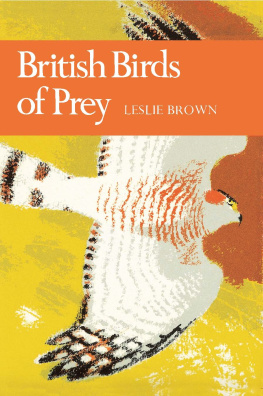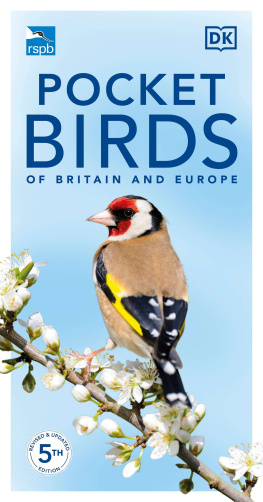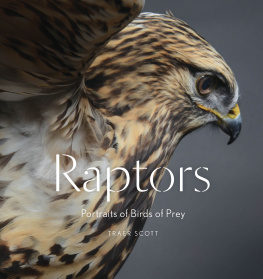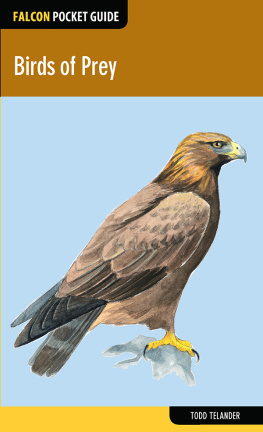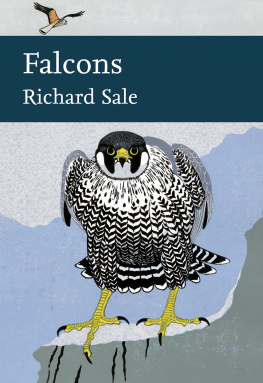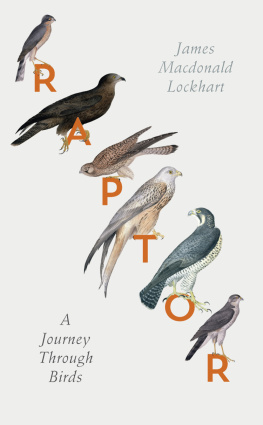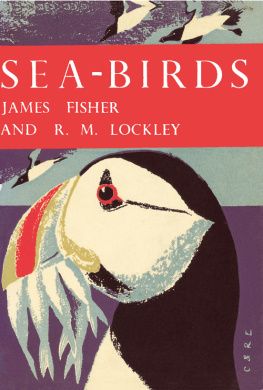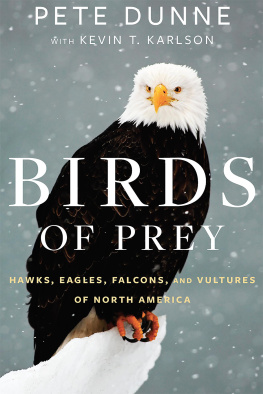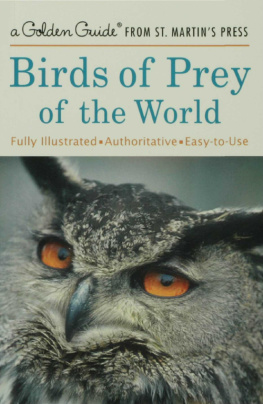
Margaret Davies, C.B.E., M.A., Ph.D.
John Gilmour, M.A., V.M.H.
Kenneth Mellanby, C.B.E., Sc.D.
PHOTOGRAPHIC EDITOR
Eric Hosking, F.R.P.S.
The aim of this series is to interest the general reader in the wild life of Britain by recapturing the inquiring spirit of the old naturalists. The Editors believe that the natural pride of the British public in the native fauna and flora, to which must be added concern for their conservation, is best fostered by maintaining a high standard of accuracy combined with clarity of exposition in presenting the results of modern scientific research.
To SPOFF and SALLY

TO MANY, hawks and eagles have become symbols of freedom. In these days, when the world is coming more and more under mans domination, and when the total destruction of our natural environment is increasingly feared, these magnificent birds achieve an even greater importance in our imagination. As long as they retain a significant place among our wildlife, everything does not appear to be lost. But they have an even greater, and more practical, importance. These birds are also increasingly recognised as indicator species, particularly susceptible to damage from man-made pollution. As long as they remain we know that the struggle for the conservation of both our wildlife and of our environment is worth pursuing.
Yet this love of our birds, particularly our birds of prey, has not always been so prevalent. In the nineteenth century, when environmental pressures were far less intense than they are today, birds like the Osprey and the Sea Eagle were exterminated in Britain, largely by persecution by man. In this ornithologists, by stealing innumerable eggs and by wholesale shooting to obtain skins for their collections, played a significant part. They undoubtedly prevented many new species which might have colonised this country from obtaining a toe hold. But it was the growth of game preservation which did most harm to our hawks. Landowners and gamekeepers believed that any bird with a hooked bill endangered their pheasants, so hawks were shot, trapped inhumanely and their nests were destroyed over most of the country. Sheep farmers in the Highlands of Scotland persecuted the Golden Eagle, in the belief that it carried off their lambs. Pigeon fanciers had a particular enmity for the Peregrine, which undoubtedly prevented some homing birds from reaching their destination.
All these birds are now protected by law. Many landowners, and even some gamekeepers, realise that they are often less harmful to game birds than are the rats and other small rodents on which the hawks largely feed. Although the inhuman pole trap is still used, and many birds are illegally poisoned, the law, and a greater knowledge of predator ecology, is having some effect. Most people are now in favour of supporting the law. But in the last twenty years a new danger has arisen from pesticides and other pollutants. In many countries species of hawks and eagles have been wiped out over large areas. In Britain, although the Sparrowhawk has ceased to breed in most counties where arable farming predominates, and the Peregrine only breeds successfully in the remoter parts of Scotland, the situation would seem to be less catastrophic. The most recent records show some improvement in the numbers, distribution and breeding success of most of our endangered species. This is largely due to the vigilance of our naturalists, who established the danger, and the co-operation of our Government, our farmers and our industrialists, who took action to control the most dangerous uses of the most toxic pesticides before it was too late.
Many of us, even naturalists familiar with other forms of wildlife, are sadly ignorant about most of the birds described in this book, so it should be of real value to its readers. The only species we can expect to see at all often is the Kestrel, so well named the Windhover or Windcheater, for this has taken to soaring over our motorways when hunting the voles which have found a perfect new habitat in the grass verges. In Wales and the West Country we may see a Buzzard, and, with luck, a Golden Eagle on a visit to the Highlands. The eleven other species which breed in Britain, and the ten others which have been recorded as regularly visiting our shores, are almost unknown except to the few. This is not entirely surprising when we realise how small are the numbers of most species. Only three have over 500 breeding pairs, and some could be counted, if not on our fingers, then on our fingers and toes.
Leslie Browns book will do much to enlighten us. Though it contains a wealth of scientific information, this is presented in a manner which will make it readily assimilated. The author is perhaps unduly modest about the part he has played in amassing the original information. He tells us that he has lived for much of his life in East Africa and other countries, and that he has only devoted a fraction of his time to first-hand field studies in Britain. However, all those who know him recognise him as an authority on the predatory birds of the world, and value his ability to compare and extend his British studies with those in other countries. Also no one person, no matter how talented and diligent, could become the infallible authority on such a large subject as that covered by this book. Leslie Brown has been able to make full and critical use of the observation of others, and the confidence other ornithologists have in him is clear from their willingness to provide him with this information.
It is a truism to say that all our wildlife in Britain is in danger from our growing and more affluent (and more mobile) population. We believe that the books in the New Naturalist series make their contribution, by helping to educate the public, to the safeguarding and conservation of that wildlife. Our hawks and eagles are clearly one of the groups most endangered, so this book is particularly important at this time, for it will make a substantial contribution to the knowledge of those engaged in protection and conservation. It should also add to their enjoyment, first as it is a pleasure to read, and secondly as it will do much to sharpen their appreciation of the countryside.

WHEN FIRST I mentioned, to Chris Perrins at the Edward Grey Institute, that I had been asked to write this book he observed Poaching, arent you?; and, in a sense, I am. However, I have gathered that several British ornithologists who might have liked to sink their teeth into this particular cock pheasant have not felt able to spare the time and effort from other more essential tasks to bag it legitimately. So it has fallen to me to climb over the fence with my concealed weapon and snatch the bird from under the noses of British experts. Those who know me well will merely observe that I am a creature of habit, and would not be able to resist it. However, when they have seen me making off with the bird they have all encouraged me in my nefarious task and, if I faltered, have plied me with meat and drink, bed and board, that I might poach the better.
In short, I could not have written this book alone. I know a lot about birds of prey in Africa but am not really expert on many British species and (dare I admit it) there are even species that I havent succeeded in seeing in Britain though I know them elsewhere. This being so I have descended shamelessly on my friends and colleagues in various parts of Britain, ruthlessly picked their brains for unpublished information, and taken up their time. One and all have drawn deep on their knowledge and imparted it freely, with the result that in many a good day in the field my own knowledge of birds of prey has been both broadened and sharpened by this critical contact with other enthusiasts and specialists. I like to hope that these advantages have been to some extent mutual.
Next page
